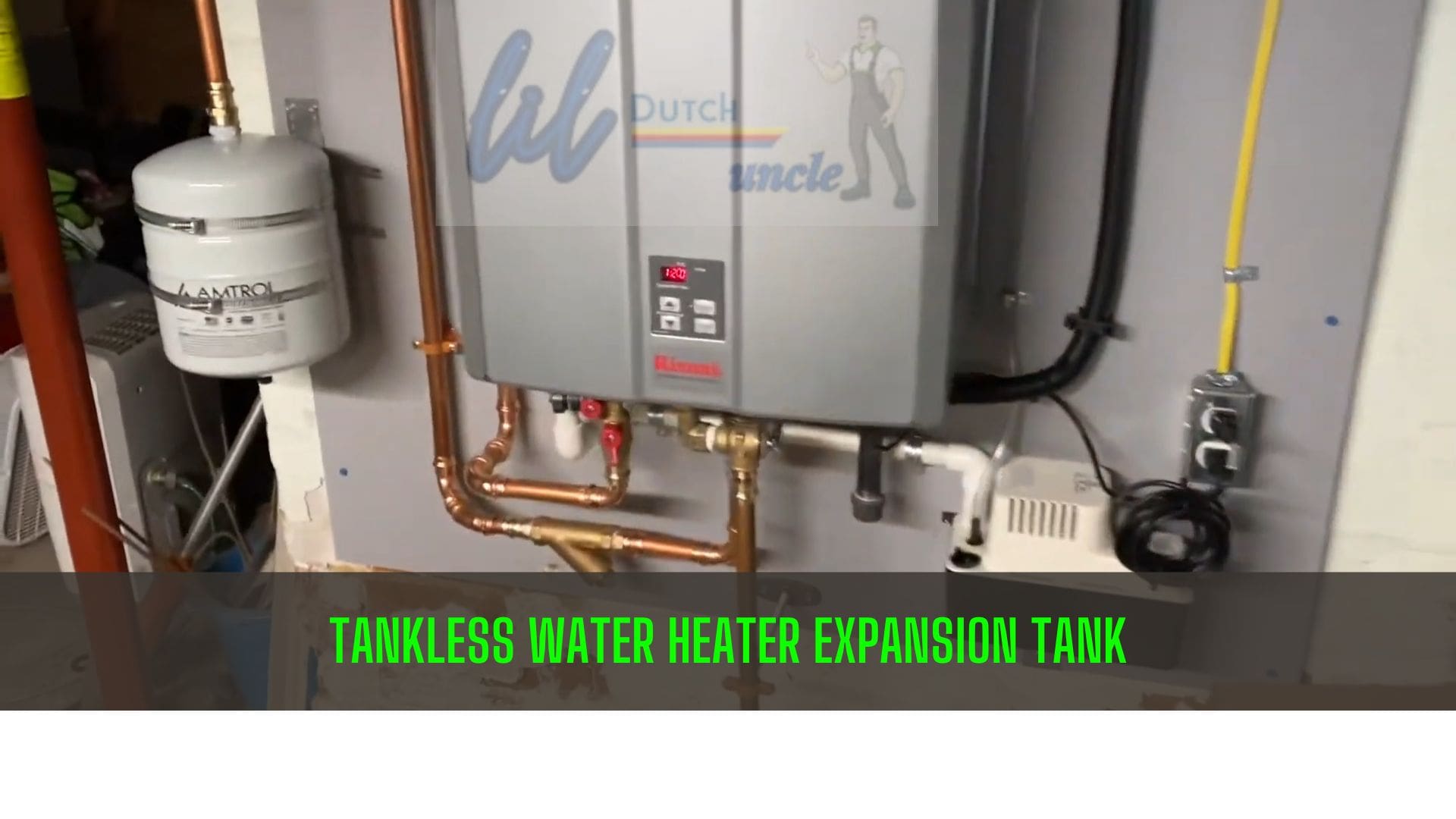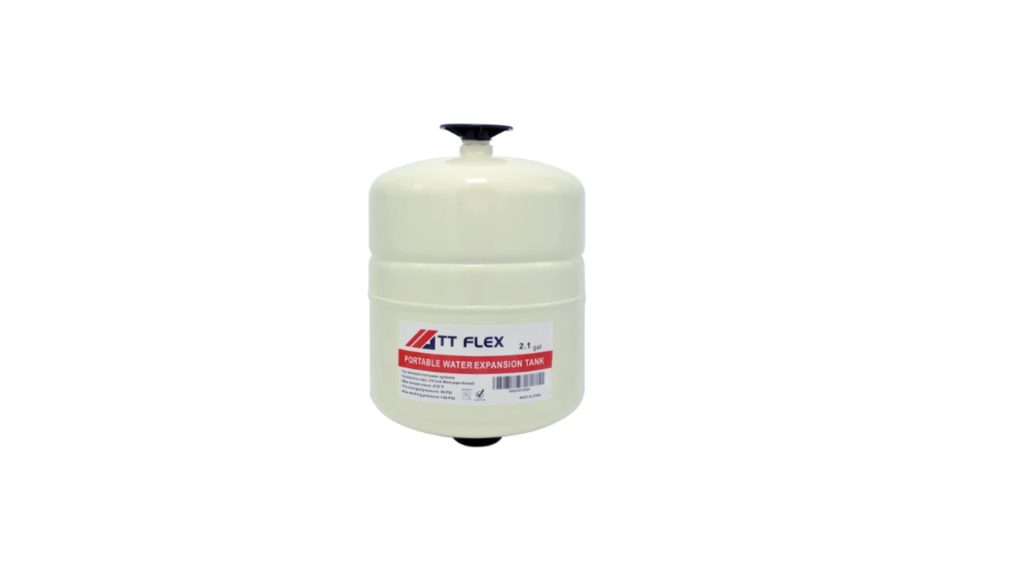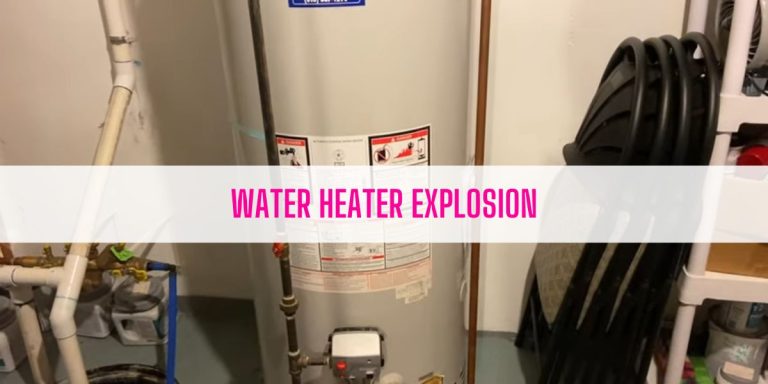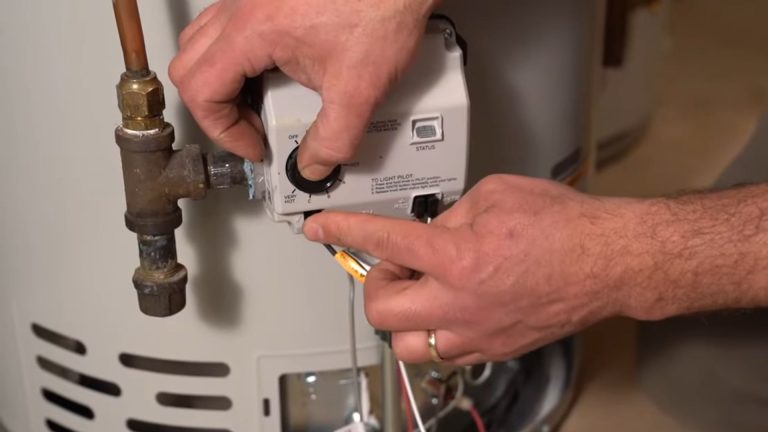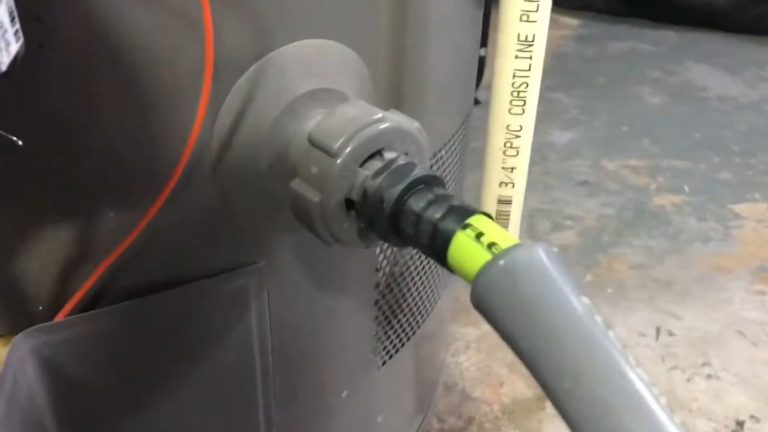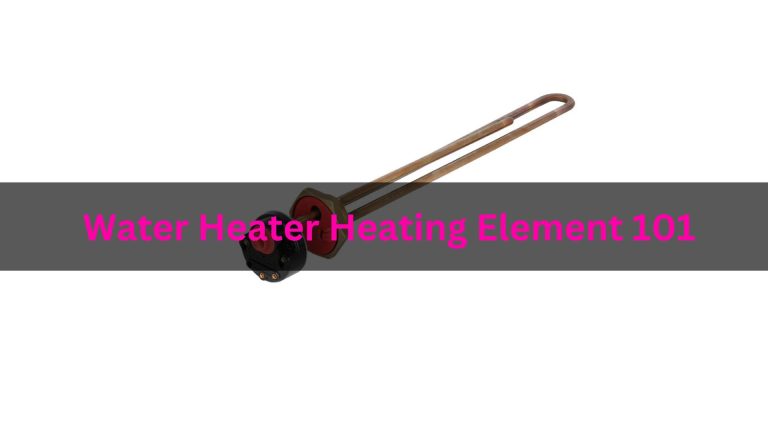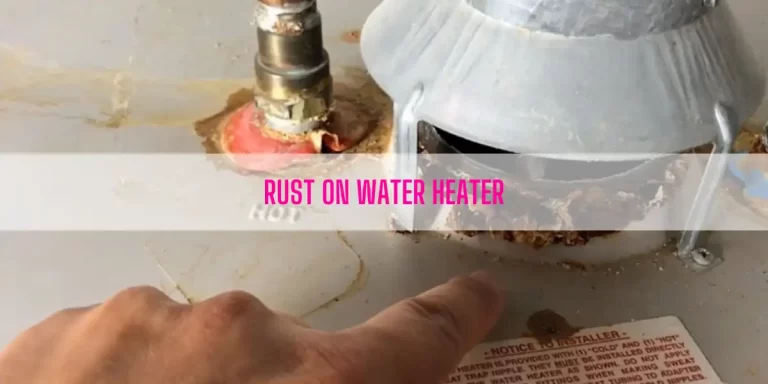Tankless Water Heater Expansion Tank [The Ultimate Guide]
This in-depth guide on Tankless Water Heater Expansion Tank will break down:
- What is an expansion tank?
- How does an expansion tank work?
- Do you need an Expansion Tank with a tankless water heater?
- Where to install an expansion tank on a tankless water heater?
- How to install an expansion tank on a tankless water heater?
Table of Contents
- What Is An Expansion Tank?
- How Does An Expansion Tank Work?
- Do You Need An Expansion Tank With A Tankless Water Heater?
- Best Expansion Tank For Water Heater
- Where To Install Expansion Tank On Tankless Water Heater?
- How To Install Expansion Tank On Tankless Water Heater?
- End-Note
Disclaimer: This post may contain affiliate links that will cost nothing from your end.
What Is An Expansion Tank?
An expansion tank, or expansion vessel the other name, is a small tank attached to the water supply line of your water heater. It helps protect closed water systems or domestic hot water systems from excessive pressure.
The expansion tank is partially filled with air. The compressibility of the air cushions shock caused by the water hammer. Besides, the elasticity of the air also soaks up the excess water pressure like a sponge caused by thermal expansion.
You can find two types of water heater expansion tanks in the market. They are:
- Compression Tank: A compression tank, also known as a plain steel tank, is mounted horizontally above the boiler. It’s perfect for one or two-story buildings.
- Bladder or Diaphragm Tank: Bladder or diaphragm tanks have a ring base. Because of its design, you can easily install it. As the name suggests, it has an internal butyl rubber bladder.
How Does An Expansion Tank Work?
Thermal expansion tanks have a rubber bladder inside, which gives the expanded water a place to go without increasing the home’s water pressure.
The rubber bladder inside the expansion tank divides the expansion tank into two sections. You should connect one side of the tank to the pipe of the water heater, which stores water. The dry side (the other side) contains pressurized air.
As the hot water enters your water heater, the pressure in the system starts climbing. Due to that increased pressure, the diaphragm inside the expansion tank is pushed down. In other words, the diaphragm expands, pushing against the compressed air.
As a result, more spaces are created for water to enter. It alleviates excess pressure in the system and protects the water heater and the pipes in the plumbing system.
Do You Need An Expansion Tank With A Tankless Water Heater?
No, you don’t need an expansion tank with a tankless water heater. But if you have a closed system like a backflow prevention device in your water system and a tankless water heating system with a storage tank, you need to install an expansion tank to alleviate the pressure.
I recommend you read the code on Thermal Expansion Control mentioned in the 2012 International Plumbing Code (IPC).
According to Section 607.3.1 of the 2012 IPC,
You should install an expansion tank if you have a water system with pipes that are 2 inches in size or smaller. On top of that, if you are using a pressure-reducing valve on the water system, you must install an expansion tank.
https://codes.iccsafe.org/content/IPC2012/chapter-6-water-supply-and-distribution
On the other hand, Section 607.3.2 of the 2012 IPC says:
“If you have a backflow prevention device or a check valve in your water system and use a storage tank for heating water, the rising temperature can cause the pressure to go up. To avoid potential damage, you should install a pressure control device.”
https://codes.iccsafe.org/content/IPC2012/chapter-6-water-supply-and-distribution
Though the IPC for Thermal Expansion Control doesn’t specify the tankless unit, we understand the concept.
According to the 2012 IPC, an expansion tank is not specifically required for a tankless water heater. But if the tankless unit has a storage heating system attached to it to store water for recirculation, pressure from thermal expansion should be stabilized.
Now, let me describe two systems- System A and System B. It will depict where and where you shouldn’t install an expansion tank for tankless water heaters.
System A: Water Distribution System With A Tankless Water Heater Without A Storage Tank
In this particular system, the water heating process occurs only when you turn on a hot water faucet. When you open a hot water faucet, the water system becomes “open” because the hot water begins to flow out. In this open system, if the water expands due to heat, it simply goes out through the open faucet, without any pressure buildup.
When you turn off the tap, the plumbing system becomes “closed.” Since no water is flowing, a tankless water heater will stop heating. It means that when the system is closed, you do not need to worry about pressure increasing due to thermal expansion.
When you use hot water, the heating system releases additional pressure through the tap. When you don’t use hot water, the system stops heating to prevent pressure build ups from thermal expansion.
In short, you don’t need to install an expansion tank if you have a tankless water heater with no storage tank.
System B: Water Distribution System With A Tankless Water Heater With A Storage Tank
This setup includes a device called a backflow preventer on the water line. Sometimes, a hot water tank without a heating element, known as an unfired hot water tank, is used to quickly provide hot water to your taps or meet high hot water demands that a tankless heater alone cannot handle. When the temperature in this tank drops, a pump is activated to circulate water through the tankless heater until the tank warms up again.
You should remember that tankless water heaters sometimes heat water even when no hot water tap is open, causing the water system to become “closed.” In such a closed system, you should regulate the increased pressure caused by thermal expansion. As the water is being heated, but without an open tap, there is no outlet for the expanded water. Therefore, you should install an expansion tank to manage the pressure increase.
Best Expansion Tank For Water Heater
If you have a closed plumbing system, install an expansion tank on your tankless water heater. It will alleviate pressure from the water heating system and protect the water heater and the plumbing system.
Here is the list of expansion tanks I recommend for your tankless water heater:
Zilmet ZEP-1 Expansion Tank for Tankless Water Heater
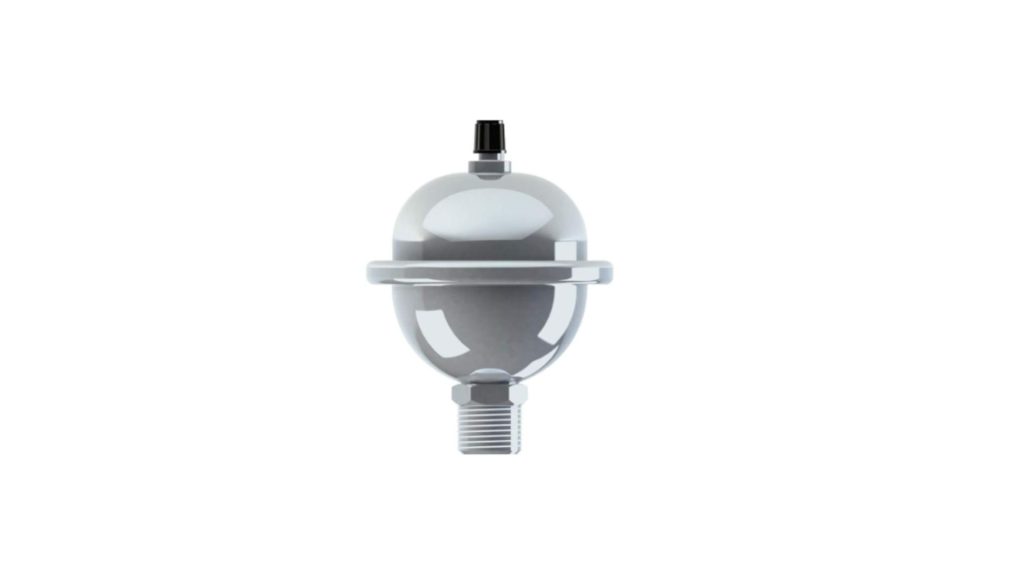
This expansion tank is specially designed for residential tankless water heaters. The stainless steel construction of this tank gives it a solid look and makes it sturdy. Installing this on the cold water line will fix the pressure relief valve that’s constantly dripping.
TT FLEX Potable Thermal Expansion Tank
The capacity of this expansion tank is 2.1 gallons, which is sufficient for most residential tankless water heaters. It has a 100% butyl diaphragm and a plastic liner that keeps the system water separate from the pre-charge air. Because of the built-in material, it can withstand corrosion & rust like a champ.
Where To Install Expansion Tank On Tankless Water Heater?
You should install the thermal expansion tank on the cold water supply line between the backflow preventer and the water heater. In short, you can install the expansion tank anywhere in the cold water line. Just verify that there is no value or check valve between the tankless unit and the expansion tank.
How To Install Expansion Tank On Tankless Water Heater?
Installing an expansion tank on a tankless water heater is a piece of cake. Before installation, ensure you have these pieces of equipment at your fingertips:
- Expansion tank
- Pipe wrench
- Adjustable wrench
- Teflon tape
- Pipe cutter or hacksaw
- Pressure gauge
- Appropriate fittings
Now, go along with these step-by-step guidelines to install an expansion tank:
Step 1. Turn off the Water Supply
Locate the shut-off valve for the main water supply to your tankless water heater. Then, turn the shut-off valve clockwise to shut off the water supply to your tankless unit. Once you turn off the water supply, it’s time to relieve pressure from the system. Regarding this, open hot faucets to release pressure from the water heating system.
Step 2. Choose The Installation Location
Locate the cold water supply line. The easiest way to identify the cold water supply line is to observe the color of the valve. A blue valve on the line indicates that the line is cold water. The cold water supply line always feeds into the tankless water heater’s input.
Next, determine where you install the expansion tank on the cold water supply line. Install the expansion tank on the cold water line before it connects to the water heater. Verify that there is no value between the tankless water heater and the expansion tank.
Step 3. Make The Expansion Tank Ready To Install
First, fix the orientation of the expansion tank. In this case, I recommend you check the manufacturer’s instructions for specific requirements.
Next, adjust the pre-charge pressure of the expansion tank. The recommended pressure for pre-charging the expansion tank is the same as the water pressure in your home. For example, if your home’s water pressure is 55 PSI, you should pre-charge the expansion tank with air to the same value before installation.
Note: If your home’s water pressure exceeds the 50-60 PSI range, you should bring the pressure under control. In this case, you should install a pressure-reducing valve.
Step 4. Install The Expansion Tank
Once you prepare the expansion tank, it’s time to install it. With the help of a pipe wrench, secure the expansion tank in a vertical position. Verify that the air valve or Schrader valve is at the top.
Apply Teflon tape to the threads of the expansion tank’s connections to ensure a leak-proof seal. Then, use tee fitting to connect the expansion tank on the cold water line. Lastly, secure those connections by tightening up.
Step 5. Test the System
Once you complete the installation, test the system for proper operation. So, turn on the main water supply and check every connection for a leak. If you find any leaks, tighten the connection.
Open a hot water faucet to bleed air from the plumbing system. Now, turn on your tankless water heater and verify that the system is working properly.
End-Note
An expansion tank is not necessary for a tankless water heater. However, you should install an expansion tank on the tankless unit if you have a closed plumbing system or use a storage tank with a tankless unit.

Sohel Rana is an expert writer (Of course, the owner and founder of this blog) on plumbing, HVAC, and appliance repair & troubleshooting. Since 2020, he has written on these specific topics, though his writing journey began in 2018.

